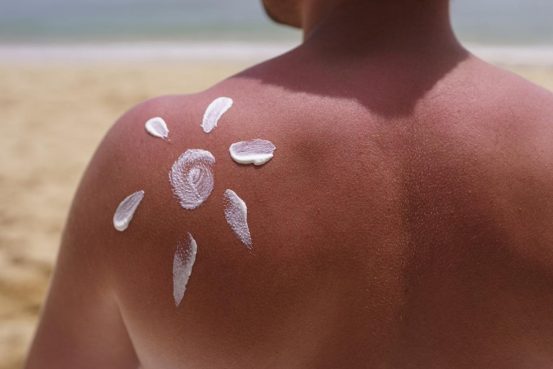
As consumers end up being increasingly smart concerning skincare, the argument in between chemical and physical sun blocks remains to be a hot topic. While both deal essential protection against the sun's unsafe ultraviolet (UV) rays, physical sunscreens are typically admired for their mild yet reliable formulation, making them a preferred option for those with sensitive or reactive skin. The trick to their success depends on their energetic components, which develop a physical barrier on the skin to shut out UV radiation. This article will certainly delve into the world of physical sunscreens, concentrating on their vital active ingredients: zinc oxide and titanium dioxide.
Unlike their chemical equivalents, which soak up UV radiation and transform it right into heat, physical sun blocks function by sitting on top of the skin to create a guard that deflects and scatters both UVA and UVB rays. This system is why they are frequently referred to as "sunblocks." The primary advantage of this technique is its instant efficiency upon application and the reduced probability of triggering skin inflammation, as the components are not taken in into the skin.
The most celebrated ingredient in the physical sunscreen family is Zinc Oxide. This giant mineral is one-of-a-kind in its capacity to give broad-spectrum security, indicating it efficiently protects the skin against the complete range of UVA and UVB rays. UVA rays are in charge of early aging, including wrinkles and great lines, while UVB rays are the main root cause of sunburn. By providing comprehensive defense versus both, zinc oxide plays an important function in preventing sunlight damage and reducing the threat of skin cancer cells.
Additionally, zinc oxide is renowned for its calming properties. It has been made use of for centuries to treat small skin inflammations, rashes, and burns, a testimony to its gentle nature. This makes sun blocks developed with zinc oxide a perfect selection for people with sensitive skin, acne-prone skin, or problems like rosacea and eczema. Its non-comedogenic buildings likewise mean it is much less most likely to block pores, an usual worry for those with oily or combination skin.
The various other key player in the physical sunscreen group is Titanium Dioxide. This naturally occurring mineral is an additional excellent component for creating a physical obstacle against UV rays. It is very reliable at reflecting and spreading UVB radiation, providing robust security versus sunburn. While it offers good security throughout the UVB range, it is typically taken into consideration less reliable versus long-wave UVA rays compared to zinc oxide.
Therefore, titanium dioxide is frequently made use of combined with zinc oxide in sunscreen solutions. This mix creates a synergistic impact, boosting the overall broad-spectrum protection of the item. By leveraging the toughness of both active ingredients, formulators can create a sunscreen that provides thorough and reputable protection versus the sun's harmful rays. Like zinc oxide, titanium dioxide is also gentle on the skin and is an appropriate alternative for those with delicate or conveniently irritated skin.
In recent years, developments in formula technology have attended to among the first downsides of physical sun blocks: the thick, white actors they would frequently leave on the skin. Modern formulations currently make use of pulverized or nano-sized particles of zinc oxide and titanium dioxide, which permits a more cosmetically classy application without jeopardizing their safety abilities. This implies you can delight in the mild, efficient security of a physical sun block without the telltale white deposit.
In conclusion, physical sun blocks use a trusted and mild means to secure your skin from the sun. Their star components, zinc oxide and titanium dioxide, work in consistency to develop a physical guard that deflects damaging UVA and UVB rays. With their outstanding safety and security profile and viability for all skin kinds, particularly sensitive skin, physical sun blocks are a powerful force in the battle versus sun damage. The following time you physical sunscreen ingredients are Browse the sunscreen aisle, consider the powerful, safety, and skin-loving advantages of a physical formula.